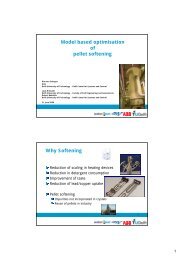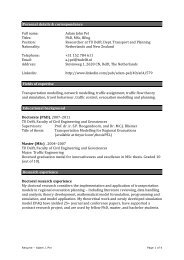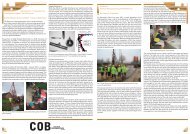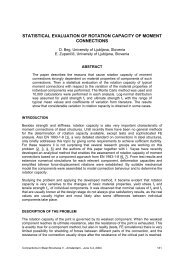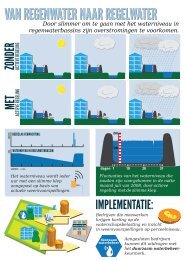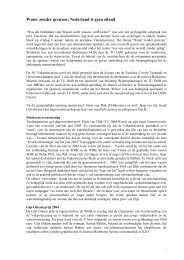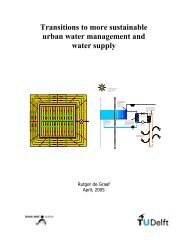Structural Design of Pavements PART VI Structural ... - TU Delft
Structural Design of Pavements PART VI Structural ... - TU Delft
Structural Design of Pavements PART VI Structural ... - TU Delft
Create successful ePaper yourself
Turn your PDF publications into a flip-book with our unique Google optimized e-Paper software.
41<br />
Normally BB measurements are only taken in the wheel tracks. These values are in fact the<br />
Def n values since that pavement area has been subjected to n load repetitions. If we also take<br />
deflection measurements between the wheel tracks, then we get a good estimate <strong>of</strong> the<br />
flexural stiffness <strong>of</strong> that part <strong>of</strong> the pavement that is not subjected to traffic loads. These<br />
deflections can be taken as representative for Def 0 .<br />
Assume that the deflection measured between the wheel tracks is 350 µm and that the<br />
deflection in the wheel tracks is 390 µm. The pavement has an unbound base. Then we arrive<br />
to:<br />
DeltaDef n = 390 – 350 = 40<br />
and<br />
DeltaDef c / Def 0 = 0.4767 – 0.000299 x 350 = 0.372<br />
so<br />
DeltaDef c = 0.372 x 350 = 130<br />
We also calculate:<br />
b = 0.91<br />
so<br />
DeltaDef n / DeltaDef c = (n / N) b<br />
40 / 130 = (n / N) 0.91<br />
n / N = 0.27<br />
Normally road authorities are not interested in a damage ratio or a remaining pavement life<br />
expressed in a number <strong>of</strong> allowable load repetitions but much more in a remaining life in<br />
years. This can be estimated in the following way.<br />
Assume the traffic composition has not changed in time and for reasons <strong>of</strong> simplicity we also<br />
assume that no growth in the number. <strong>of</strong> vehicles per day has taken place. This means that<br />
the area indicated in figure 26 is representative for the cumulative amount <strong>of</strong> traffic n that has<br />
passed the road during time period t.<br />
Traffic intensity<br />
n<br />
N<br />
t<br />
T<br />
Time<br />
Figure 26: Procedure to estimate the remaining life in years from the n/N ratio.<br />
In the same way the allowable number <strong>of</strong> load repetitions N is arrived after T years. From this<br />
simple example it is clear that in this case:<br />
t / T = n / N



